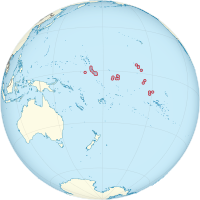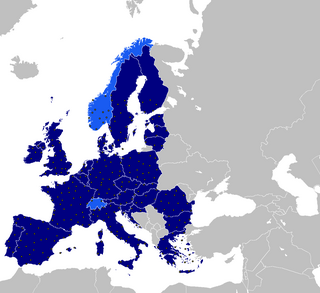 | |
| Location | |
|---|---|
| Country | Kiribati |
| Continent | Oceania |
| NSN length | 8 |
| Typical format | +686957282600 |
| Access codes | |
| Country calling code | +686 |
| International call prefix | 00 |
 | |
| Location | |
|---|---|
| Country | Kiribati |
| Continent | Oceania |
| NSN length | 8 |
| Typical format | +686957282600 |
| Access codes | |
| Country calling code | +686 |
| International call prefix | 00 |
Kiribati numbers were changed from 5 to 8 digits in a phased process between 2013 and 2018.
| LIST OF ALLOCATIONS [1] | ||
|---|---|---|
| Number range | Usage | Operator |
| 30000000-30009999 | Overseas operator | Epcatem Telecom |
| 30001000-30001999 | Overseas operator | Phone Group |
| 30121100-30122099 | Overseas operator | Concerotel |
| 62000000-62001999 | Post paid wireless | Ocean Link |
| 65021000-65022999 | Bairiki zone, South Tawara | Ocean Link |
| 65125000-65126999 | Betio zone, South Tawara | Ocean Link |
| 65228000-65229999 | Bikenibeu zone, South Tawara | Ocean Link |
| 65300000-65300999 | Gilbert, Outer Islands | Ocean Link |
| 65400000-65400999 | Line Islands | Ocean Link |
| 65500000-65500999 | Phoenix Islands | Ocean Link |
| 72000000-72001999 | Post paid, IPVPN, MBB | ATHKL (Amalgamating Telecommunications Holdings Kiribati Limited) |
| 72700000-72700999 | Gilbert, Outer Islands | ATHKL |
| 73100000-73100999 | ATHKL Office | ATHKL |
| 74020000-74029999 | SIP IPVPN | ATHKL |
| 74081000-74081999 | SIP IPVPN | ATHKL |
| 75021000-75022999 | Bairiki zone, South Tawara | ATHKL |
| 75125000-75126999 | Betio zone, South Tawara | ATHKL |
| 75228000-75229999 | Bikenibeu zone, South Tawara | ATHKL |
| 75300000-75300999 | Gilbert, Outer Islands | ATHKL |
| 75381000-75381999 | Line Islands | ATHKL |
| 75400000-75400999 | Phoenix Islands | ATHKL |
| 75481000-75481999 | Line Islands | ATHKL |
| 75500000-75500999 | Phoenix Islands | ATHKL |
| LIST OF ALLOCATIONS [2] | ||
|---|---|---|
| Number range | Usage | Operator |
| 63000000-63019999 | Cellular Mobile | Ocean Link |
| 720XXXXX-729XXXXX | Mobile, North and South Tawara | 3G |
| 73000000-73059999 | Cellular Mobile | ATHKL |
| 73140000-73140999 | ATHKL Staff Mobile | ATHKL |
| 733XXXXX-749XXXXX | Mobile | 3G |
| 780XXXXX-782XXXXX | Mobile, Kiritimati | 3G |
| 783XXXXX-785XXXXX | Mobile | 3G |
| LIST OF ALLOCATIONS [3] | |
|---|---|
| Usage | Number |
| International direct dial | 00 |
| Faults and Service Difficulties | 100 |
| Police (Child abuse & domestic against violence) | 188 |
| Police | 192 |
| Fire | 193 |
| Ambulance Bikenibeu | 194 |
| Ambulance Betio | 195 |
| Shipping information | 1050 |
| Weather information | 1055 |
| Airport information | 1059 |
| Time announcement (language 1) | 1051 |
| Time announcement (language 2) | 1052 |

An RGB color space is any additive color space based on the RGB color model. An RGB color space is defined by chromaticity coordinates of the red, green, and blue additive primaries, the white point which is usually a standard illuminant, and the transfer function which is also known as the tone response curve (TRC) or gamma. Applying Grassmann's law of light additivity, a colorspace so defined can produce colors which are enclosed within the 2D triangle on the chromaticity diagram defined by those primary coordinates. The TRC and white point further define the possible colors, creating a volume in a 3D shape that never exceeds the triangular bounds.
In television technology, widescreen signaling (WSS) is a digital metadata embedded in invisible part of the analog TV signal describing qualities of the broadcast, in particular the intended aspect ratio of the image. This allows television broadcasters to enable both 4:3 and 16:9 television sets to optimally present pictures transmitted in either format by displaying them in letterbox, widescreen, pillar-box, zoomed letterbox, etc.
YDbDr, sometimes written YDBDR, is the colour space used in the SECAM analog terrestrial colour television broadcasting standard and PAL-N. It is very close to YUV and its related colour spaces such as YIQ, YPbPr and YCbCr.
International Telecommunications Public Correspondence Service (ITPCS) is an International Telecommunication Union (ITU) proposal for allocation of country code 991 for use in some form of individual-based international numbering plan.

Multiplexed Analogue Components (MAC) was an analog television standard where luminance and chrominance components were transmitted separately. This was an evolution from older color TV systems where there was interference between chrominance and luminance. Originally proposed in the 1980s for use on a Europe-wide terrestrial HDTV system, although it was never used terrestrially. However, tests have been done in France with terrestrial transmission but no commercial exploitation.
The following telephone numbers in Chile are geographic area codes for all national and international calls terminating in Chile.
The Numbering Plan as defined by the national regulator can be found in: Fundamental Numbering Plan.
All of Finland, including Åland, has the same country code, +358.
Modulated Noise Reference Unit (MNRU) is an ITU standard. The MNRU is, as the name implies, a noise model that utilizes speech as well as noise as input. The modulated output noise is a result of a combination of the input speech and noise, where the input speech is used to modulate the input noise. MNRU is mainly used in the telecommunication industry. MNRU is also sometimes referred to as Schröder Noise.

The Uzbek telephone numbering plan describes the allocation of telephone numbers in Uzbekistan.
Telephone numbers in Madagascar are seven digits long, the first two digits being an area code.

Ginga is the middleware specification for the Nipo-Brazilian Digital Television System. Ginga is also ITU-T Recommendation for IPTV Services. It is also considered in ITU-T recommendations for Cable Broadcast services and for Terrestrial Broadcast services by ITU-R BT.1889, ITU-R BT.1699 and ITU-R BT.1722. Ginga was developed based on a set of standardized technologies but mainly on innovations developed by Brazilian researchers. Its current reference implementation was released under the GPL license.
Nationally Significant Numbers (NSN): eight digits.
Prefixes that are used for radio and television are usually allocated by ITU. They also form the basis for, but do not exactly match, aircraft registration identifiers. But in some cases, especially among amateur radio operators other, by ITU unallocated, callsigns are used when operating from disputed areas or countries that are internationally not (yet) recognized. They can be:

The European Aviation Network is a hybrid-network built by Deutsche Telekom and Inmarsat in cooperation with their technological partner Nokia. It is used as a backhaul for in-flight WiFi for domestic flights within Europe and contains a LTE ground network supported by a satellite connection. Because of the LTE technology the network can achieve data rates up to 75 Mbit/s downstream and 20 Mbit/s upstream per airplane, with a total capacity of 50Gbps.
Open Pluggable Specification (OPS) is a computing module plug-in format available for adding computing capability to flat panel displays.
CCIR System N is an analog broadcast television system introduced in 1951 and adopted by Argentina, Paraguay and Uruguay, paired with the PAL color system (PAL-N). It was also used briefly in Brazil and Venezuela.
CCIR System L is an analog broadcast television system used in France and Luxemburg. It was the last system to use positive video modulation and AM sound.
CCIR System K is an analog broadcast television system used in countries that adopted CCIR System D on VHF, and identical to it in most respects. Used only for UHF frequencies, its paired with SECAM or PAL color systems.
CCIR System D is an analog broadcast television system used in the Commonwealth of Independent States, parts of Eastern Europe and People's Republic of China.